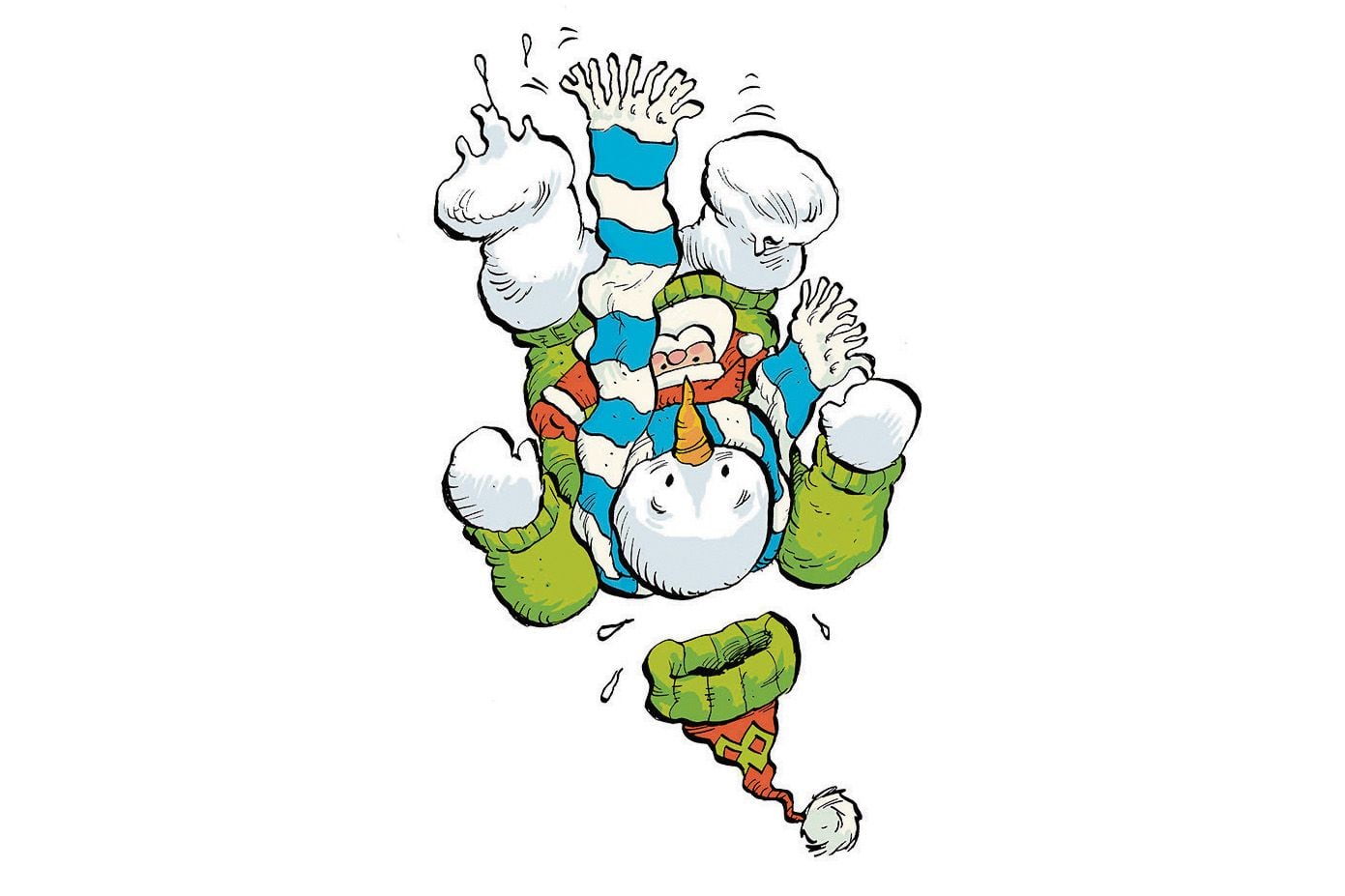
A Common Loon chick hitches a ride on its mother's back while her mate looks for food on Maranacook Lake, in Winthrop, Maine, on July 20, 2021.Chris O'Meara/The Associated Press
Every morning in the summertime, Peter Penlington brings a cup of coffee down to the dock at his home in Bancroft, Ont., to watch the pair of loons that call the lake home.
They like to feed on minnows near a waterfall Mr. Penlington, a 59-year-old retired civilian manager for the Waterloo Regional police, built a few years ago. The sight of the birds never ceases to move him.
“It’s just spectacular,” he says.
So when Mr. Penlington learned of the Canadian Lakes Loon Survey, a project by Birds Canada to help understand why loons are disappearing, he was quick to volunteer.
Loons and their haunting calls may be treasured by many Canadians, but the birds are slowly disappearing. The subject is explored in the one-hour documentary Loons: A Cry from the Mist, airing on the Cottage Life Network this month. The film makes clear that the exact reasons for the declining rates of loons is still a mystery. The Birds Canada citizen science project is a key to helping ensure researchers can save them solve the mystery, conservationists say.
“Canada has a big responsibility for this species,” says Dr. Doug Tozer, director of water birds and wetlands at Birds Canada.
There are some in Greenland, the U.K. and Europe, but Canada is home to about 90 per cent of the world’s common loons, Dr. Tozer says.
Some 600,000 are in Canada, more than one-third of which breed on the inland lakes of southern Ontario.
Research from the Birds Canada survey shows that there are approximately 25 to 30 per cent fewer chicks being produced across southern Canada than there were a decade ago, Dr. Tozer says.
“The long story short, is, of course, that we don’t really know why. It’s still a mystery. We don’t have a smoking gun,” Dr. Tozer says.
Bald eagles, which prey on loons, were once thought to be one reason for the decline, but an analysis of survey data eliminated that possibility, Dr. Tozer says. The same goes for the rising number of double crested cormorants, which compete with loons for food – the survey showed no correlation there either.

A loon swims on Squam Lake, in Holderness, N.H., on June 25, 2021.Elise Amendola/The Associated Press
One hypothesis points the finger at levels of methylmercury, a powerful neurotoxin, in lakes.
“We found a signal that suggests support for this whole idea, especially using our longer-term data from Ontario,” Dr. Tozer says. “But we don’t think it’s the whole story.”
Climate change is also a likely factor, especially in how it may be affecting loons’ wintering grounds, which include the offshore waters of the Pacific and Atlantic Oceans as well as the Gulf of Mexico.
“We just wonder if climate change is altering their food on the wintering grounds and reducing their survivorship. So that’s something we’re trying to look into,” Dr. Tozer says.
With still so much unknown about why loons are producing fewer chicks, getting more people to participate in the Birds Canada survey is key to helping researchers better understand the issue, he says.
“More participants gives us more power to detect trends in productivity. And the more power we have, the quicker we can get to solutions to solve whatever the problem is,” Dr. Tozer says.
Launched in Ontario in 1981, the survey went national in the 1990s.
Today it has approximately 750 volunteer participants, who might be required to record such data as the number and ages of common loon pairs and chicks on a lake they visit at least three times a year over the summer.
“It’s a great way and an example of the citizen science for conservation where people can contribute their observations,” says Daniel Kraus, director of national conservation at the Wildlife Conservation Society of Canada.
Mr. Penlington says the work required to participate in the survey is easy, and hardly a demand for someone such as himself, who is always watching the lake for loons anyways.
It’s his way of trying to help save something quintessentially Canadian, Mr. Penlington says. “The call of the loon in cottage country is as iconic as a polar bear,” he says.

Do you think you have what it takes to complete The Globe’s giant holiday crossword?
Download the puzzle here. Share your progress with us on social media using the hashtag #GlobeCrossword.